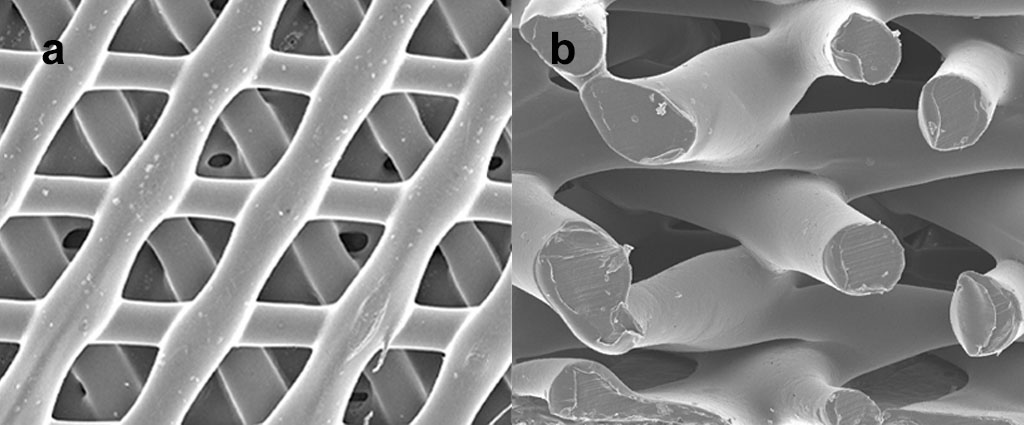Why In-Situ Tissue Engineering (ISTE)?
Osteopore (OSX)'s technology harnesses the body’s regenerative capacity to rebuild lost tissues, by leveraging on the natural healing process to guide the functional restoration of tissues at the defect site.
With ISTE, surgeons and dentists can reduce time to treatment as they are not required to extensively manipulate/culture cells and material outside of the body, unlike in-vitro tissue engineering.
How do biodegradable implants work?
Our implant biodegrades (breaks down) completely over 18 to 24 months through simple hydrolysis. As tissue regeneration occurs through the natural healing process, our implant is replaced by the patient’s own tissue and bones.
We develop our implants alongside leading surgeons and dentists to ensure that in-situ tissue growth is limited to the defect and occurs only in the required area and stops when the regenerative process completes. Our technology meets the strict requirements of many regulatory bodies in various regions.
We are cleared by FDA (U.S.), CE Mark (European Union), TGA (Australia), HSA (Singapore), and more.

Honeycomb microstructure of Osteopore’s implant. Top view (left) and side view (right)
1 Predictable degradation profile
Osteopore (OSX) implant’s material provides a predictable profile throughout the entire regenerative phase.
Our honeycomb microstructure allows infiltration of blood vessels and new bone formation deep within the material, not only on the surface.3 This ensures that the viable tissue is maintained throughout the scaffold volume during the regeneration phase.
Studies showed vascularization within our implants, allowing direct mineralized matrix formation in the scaffold interior.4
2 Structural properties similar to cancellous bone
The unique 3D printing technology—coupled with the choice of polycaprolactone—allows our implant to attain a structural stiffness similar to cancellous bone.5 This enables our implants to provide structural support during the regenerative phase.
3 Interconnected microstructure to facilitate regeneration
The pores in our implants are interconnected to support the regeneration process by facilitating tissue ingrowth and vascularization.6
4 Low post-operative complication rates & better outcomes
Our products have been implanted globally for more than 15 years, with no record of adverse events or serious adverse events.
Our post-marketing data have shown that post-op complication rates with our implants to be low. With no permanent foreign materials in the body, the chances for long-term complication and reoperations are reduced.7
- Sengupta, D., Waldman, S. D. & Li, S. From In Vitro to In Situ Tissue Engineering. Ann. Biomed. Eng. 42, 1537–1545 (2014)
- Pappalardo, D., Mathisen, T. & Finne-Wistrand, A. Biocompatibility of Resorbable Polymers: A Historical Perspective and Framework for the Future. Biomacromolecules 20, 1465–1477 (2019)
- Karageorgiou, V. & Kaplan, D. Porosity of 3D biomaterial scaffolds and osteogenesis. Biomaterials 26, 5474–5491 (2005)
- Rai, B. vd. Combination of platelet-rich plasma with polycaprolactone-tricalcium phosphate scaffolds for segmental bone defect repair. J. Biomed. Mater. Res. A 81, 888—899 (2007)
- Zein, I., Hutmacher, D. W., Tan, K. C. & Teoh, S. H. Fused deposition modeling of novel scaffold architectures for tissue engineering applications. Biomaterials 23, 1169–1185 (2002)
- Hutmacher, D. W. vd. Mechanical properties and cell cultural response of polycaprolactone scaffolds designed and fabricated via fused deposition modeling. J. Biomed. Mater. Res. 55, 203–216 (2001)
- Seen, S. vd. Orbital Implants in Orbital Fracture Reconstruction: A Ten-Year Series. Craniomaxillofac. Trauma Reconstr. 14, 56–63 (2020)